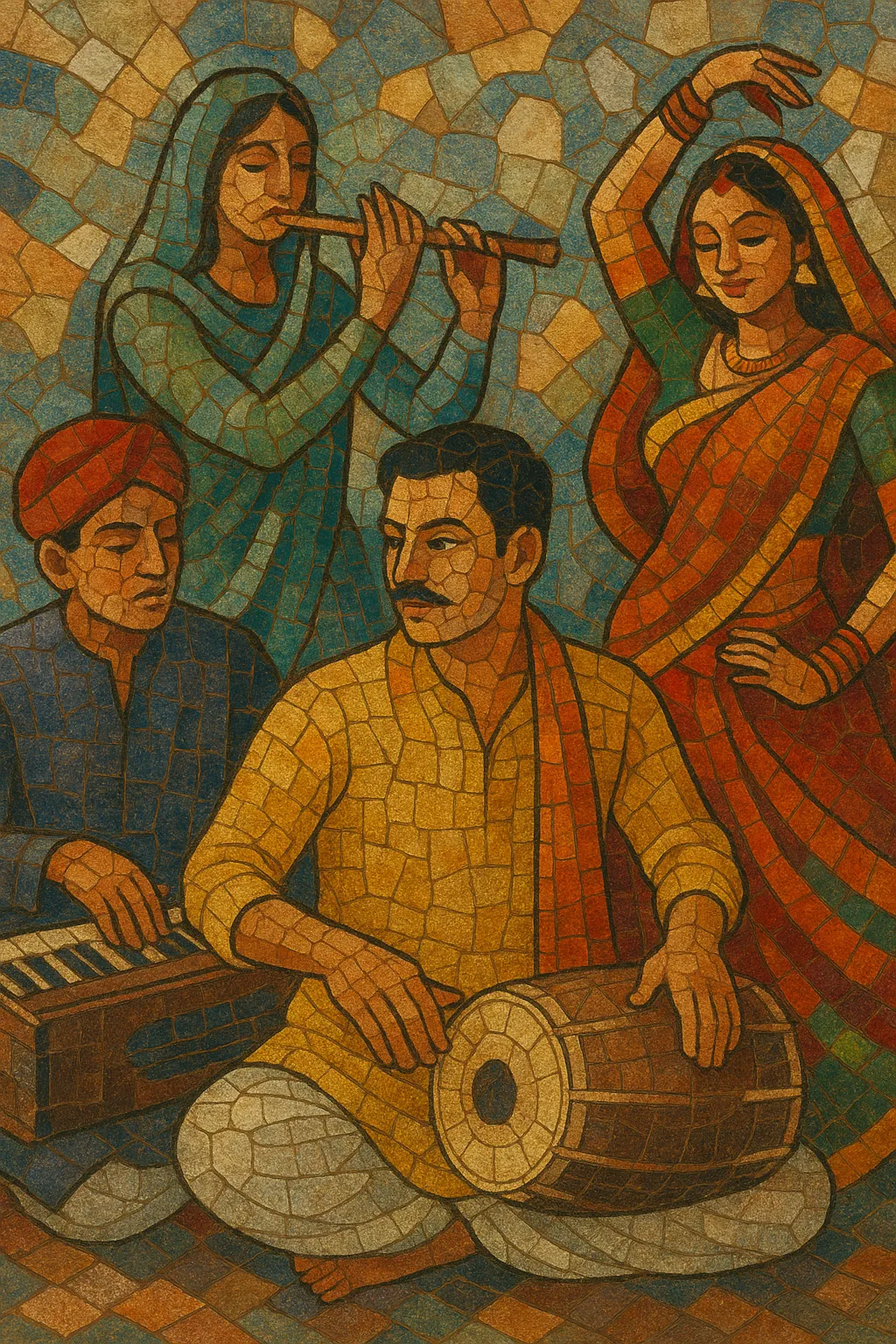Bhojiwood is the popular song repertoire associated with the Bhojpuri-language film industry, blending North Indian folk idioms with Hindustani light-classical sensibilities and contemporary pop-dance production.
Typical arrangements fuse dholak-driven grooves, harmonium and shehnai or bansuri with glossy synthesizers, drum machines, and Auto-Tuned vocals. Lyrical themes range from romance and playful banter to festive rituals (especially Chhath and wedding songs) and migration-longing, reflecting the culture and diaspora of eastern Uttar Pradesh and western/northern Bihar.
In the 2000s–2010s, viral earworms and high-energy dance numbers propelled the style into broader Indian and global visibility, with YouTube and short-video platforms becoming major engines of distribution.
Bhojpuri cinema debuted with Ganga Maiyya Tohe Piyari Chadhaibo (1963), introducing a film-song idiom grounded in local folk traditions (biraha, kajri, chaiti) and light-classical practice. Arrangements centered on dholak, harmonium, and melodic lines informed by common raags, with film playback conventions borrowed from broader Hindi "filmi" craft.
Production volumes dipped, yet the idiom persisted through festival cassettes and regional radio. Wedding and seasonal songs (Holi, Chhath) kept the style alive, while Hindustani-light and ghazal aesthetics continued to shape melody and vocal delivery.
A commercial resurgence brought new stars and dance-forward production. Songs adopted punchier, hook-centric structures and brighter, electronic rhythm sections. High-energy anthems—amplified by CD markets and local cable—repositioned Bhojiwood as a mass-party soundtrack in North India and diaspora communities.
YouTube and short-video platforms transformed distribution and aesthetics. Producers leaned into EDM-influenced beats, thick bass, and prominent Auto-Tune, while retaining folk-rooted rhythms (keherwa, dadra) and Bhojpuri lyrical identity. Viral hits and crossovers with pan-Indian pop broadened the audience, yet festival and wedding repertoires remain central to the genre’s cultural role.


